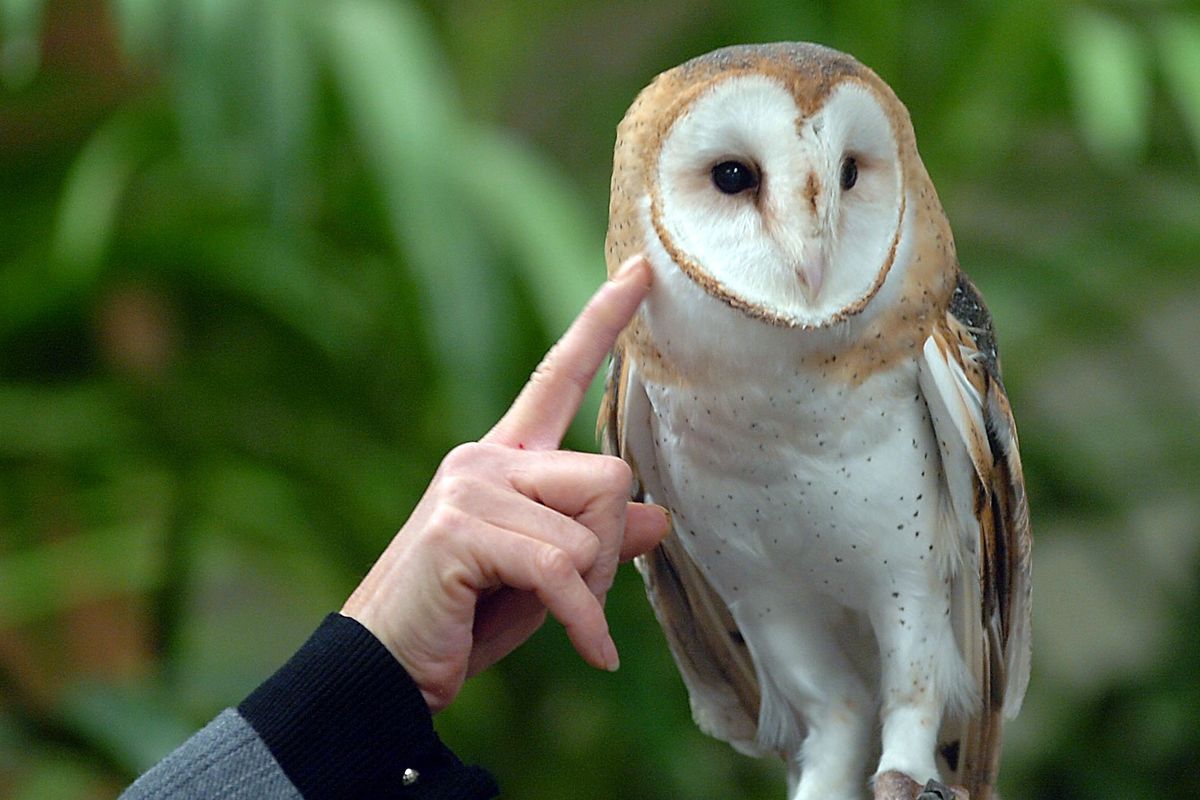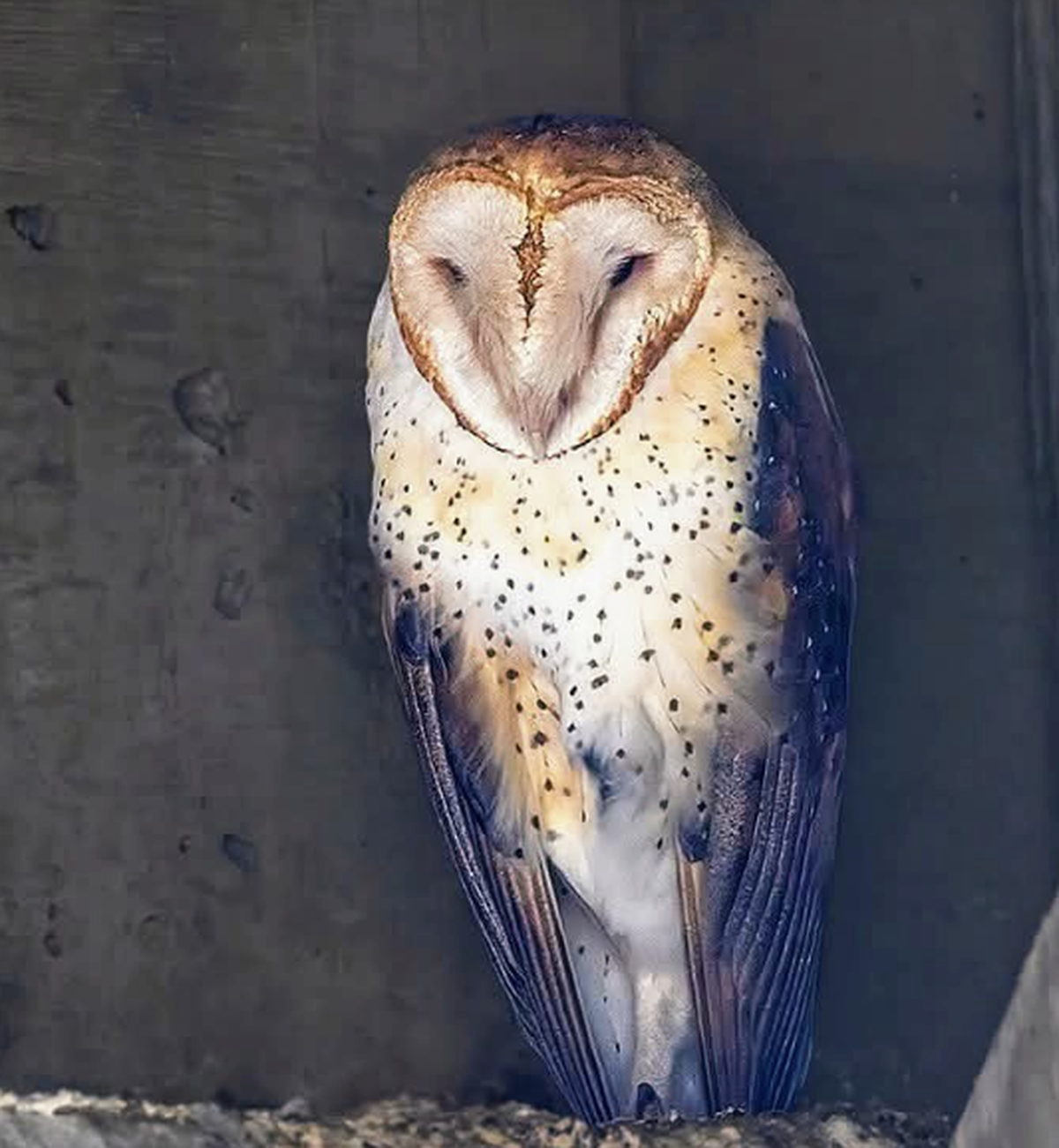Cool critters: Ghostlike predators of the night
A barn owl sits on the hand of a raptor biologist. Barn owls are the most common owl species in Washington though they are rarely seen in the wild. This owl was raised in captivity and shown in educational presentations. (JESSE TINSLEY/THE SPOKESMAN-REVIEW)
Owls, with their earth-toned feathers, are masters of camouflage. But not the barn owl. Adorned with striking white plumage and an odd heart-shaped face, you might think the owl’s conspicuous appearance would make them easily visible to humans and spur prey to flee – or at least give them a good laugh.
Instead, the opposite is true.
Standing some 16 inches tall and with a wing span of 43 inches, barn owls are rodent killing machines. They eat so many gophers, mice and voles that farmers, orchardists and winegrowers attract them to their sites by installing barn-owl boxes for roosting and nesting.
Additionally, the barn owl is one of the most common owl species found in Washington state and throughout the world. In Eastern Washington, they are abundant in agricultural areas, forest openings, fields and other “relatively large, open spaces,” according to Birdweb, an online guide to Washington’s birds.
Even so, have you ever seen a barn owl? Probably not.
It’s as if they are ghosts.
Like ghosts, barn owls are white for a reason. Unlike the great horned owl that scans for prey while perched high in a tree, the barn owl hunts mostly by flying low over open ground. As it turns out, the raptor’s ghostly plumage is so glaring against the darkness of night that it stuns prey into freezing like a deer in the headlights, according to a 2019 study published in the journal Ecology and Evolution.
Also, thanks to an auditory superpower that few other animals possess, the barn owl knows precisely where prey are located – even in deep snow. Remember its flattish, heart-shaped face? Like a satellite dish, it collects sounds and then channels them toward each of the bird’s two ears, positioned at different heights on the skull.
“Barn owls can locate prey in total darkness using only the sense of hearing, with an error of less than 1 (degree) in both the vertical and horizontal planes,” wrote noted biologist Roger S. Payne, the first researcher to document what makes barn owls such successful nighttime hunters. (It was Payne who discovered that whales serenade each other, giving rise to the global “save the whales” movement that began in the late 1960s.)
Besides an acute sense of hearing, barn owls have another superpower: the ability to fly almost soundlessly.
“It is a silent, moth-like flight that can make them resemble otherworldly apparitions,” the American Bird Conservancy said.
How does a bird as tall as a gargoyle and with a wing span of 3½ feet fly so quietly? In a 2020 study published in the journal Integrative Organismal Biology, scientists said the unique structure of the owl’s wings and individual feathers streamline air flow and absorb sounds. Researchers theorize that “silent flight” has two main purposes. Not only does it prevent wing-flapping noises that might prevent the owl from hearing prey, it enables the owl to approach prey without being heard.
With their ghostly looks and a heart for a head, barn owls are a head-turning sight. Why then, do humans rarely spot them? Unlike eagles and hawks, they hunt in the dark. By day, they rest in enclosed spaces including barns – they’re barn owls, after all – along with hollow trees, old structures, caves and, in recent years, human-made owl boxes.
Yes, this creature of the night is good at avoiding human detection. That is, until it screeches. Rather than hoot like a great-horned owl, barn owls let out a long, eerie shriek to communicate with other barn owls or to warn of potential threats.
Consider that distinctive shriek, combined with the bird’s pearly-white plumage against the blackness of night and its silent flight. Clearly, the barn owl is aptly nicknamed: ghost owl.

